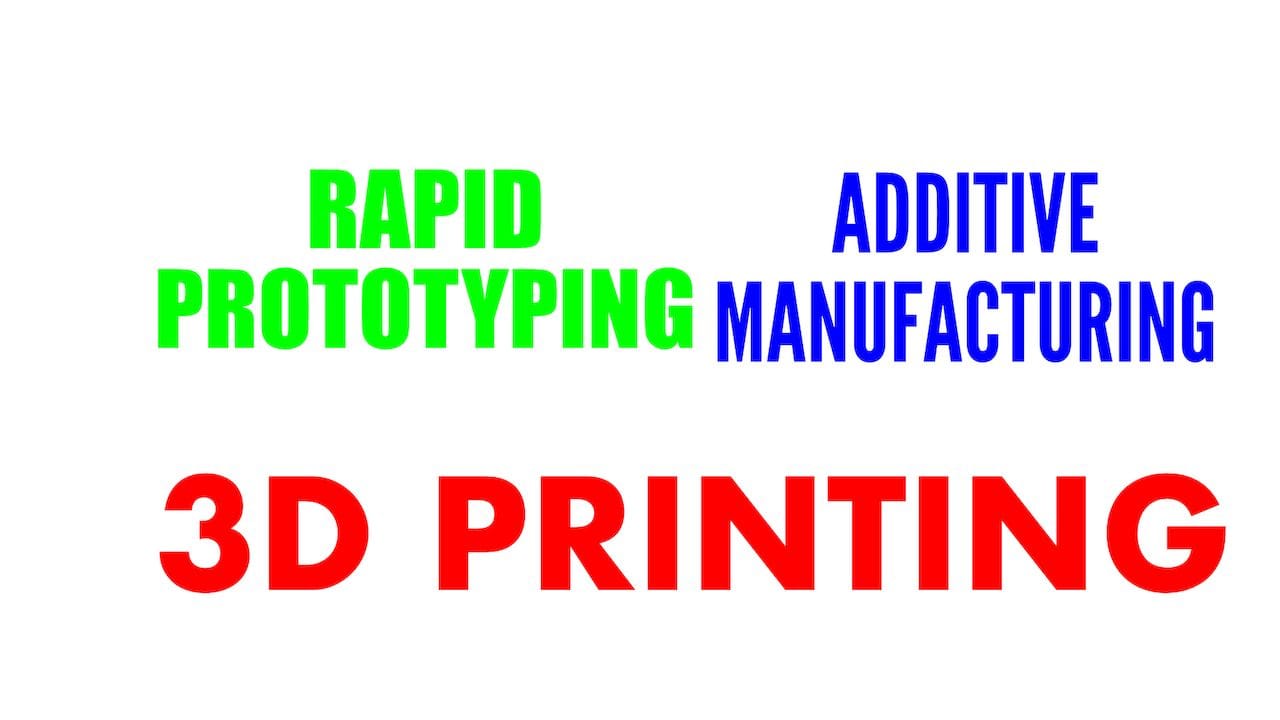![Which is the right term? [Source: Fabbaloo]](https://fabbaloo.com/wp-content/uploads/2020/05/image-asset_img_5eb091414f3ec.jpg) Which is the right term? [Source: Fabbaloo]
Which is the right term? [Source: Fabbaloo]
It seems my post on the seemingly-interchangeable terminology used in this industry has provoked some discussion.
The previous post talked about the three different terms used for the technology followed by this publication:
-
Rapid Prototyping, the original term that seems to have fallen out of favor
-
3D printing, a snappy marketing term that took over in 2009
-
Additive Manufacturing, an alternative term reacting to the introduction of desktop equipment.
Trends show that “Additive Manufacturing” is gaining in the business world, but “3D printing” dominates everywhere else.
One incredibly incisive comment we received was from Fabbaloo reader James Ashby, who said:
“I have always said that 3D/Additive/RP — call it what you will — suffers from the twin scourges of Journalism and Marketing. Journalists have over hyped this technology from day one, and the marketing departments of some of the manufacturers are ‘somewhat over enthusiastic’ in their descriptions of the capabilities of their machines.
It’s fairly easy to classify something as ‘Rapid prototyping’ — if you make prototypes/iterations rapidly — you’re rapid prototyping. However, when people who only make prototypes call what they do ‘Additive Manufacturing’, then I have a problem.
Prototyping is not production and, to me, manufacturing has to have verification, traceability, accuracy and repeatability to be truly classed as manufacturing. Materials must be traceable and verifiable — if the guy who made your car tyres couldn’t verify or trace his materials would YOU use his product? By the same token, if you broke a part on your car, you’d expect the replacement to be the same size (accurate) and shape (repeatable) as the one you’re replacing — no matter when they were made.
Yet, we still have additive machine manufacturers who don’t, won’t (or can’t!) verify or trace their materials to source — and they still call it ‘Additive Manufacturing’. We still have machine manufacturers who expect their users to make 3 parts to get one good one. This is not, by any stretch of the imagination, manufacturing.”
There is so much truth in what Ashby says, and it really lies in the usage pattern of the device. Manufacturing is truly a very different animal than prototyping. And both are different from casual “making”. Like Ashby, I am concerned when someone says they are “manufacturing”, when they clearly are not — or are providing only a small portion of a proper manufacturing process.
If one is making prototypes quickly, then “Rapid Prototyping” is certainly appropriate. If one is manufacturing products additively, then “Additive Manufacturing” is totally clear.
Perhaps a good rule of thumb might be the following:
-
If you are iteratively building prototypes not intended for production, then use “Rapid Prototyping”;
-
If you are truly manufacturing a product, with the required traceability and verifications, then use “Additive Manufacturing”;
-
For anything else, use “3D Printing”.
Such rules might get the marketing folks upset, but this would surely convey a better sense of what’s actually happening with these increasingly common devices.

